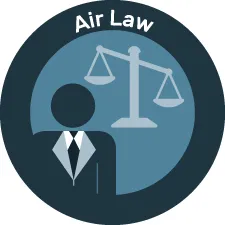
Fundamentals of International Aviation
Suzanne K. Kearns
- 476 Seiten
- English
- ePUB (handyfreundlich)
- Über iOS und Android verfügbar
Fundamentals of International Aviation
Suzanne K. Kearns
Über dieses Buch
International aviation is a massive and complex industry that is crucial to our global economy and way of life. Designed for the next generation of aviation professionals, Fundamentals of International Aviation, second edition, flips the traditional approach to aviation education. Instead of focusing on one career in one country, it introduces readers to the air transport sector on a global scale with a broad view of all the interconnected professional groups.
This text provides a foundation of 'how aviation works' in preparation for any career in the field (including regulators, maintenance engineers, pilots, flight attendants, airline and airport managers, dispatchers, and air traffic controllers, among many others). Each chapter introduces a different cross-section of the industry, from air law to operations, security to environmental impacts. A variety of learning tools are built into each chapter, including 24 case studies that describe an aviation accident related to each topic. This second edition adds new learning features, geographic representation from Africa, a new chapter on economics, full-color illustrations, and updated and enhanced online resources.
This accessible and engaging textbook provides a foundation of industry awareness that will support a range of aviation careers. It also offers current air transport professionals an enriched understanding of the practices and challenges that make up the rich fabric of international aviation.
Häufig gestellte Fragen
Information

International Air Law


Chicago Convention contain Standards and Recommended Practices (SARPs) which States must abide by and those they should comply with. Currently, the Convention has annexes.
- 9
- 13
- 19
- 26
- True
- False
- True
- False
- Month
- Year
- 3 years
- 5 years
- True
- False

- discuss the origins of aviation and the history of international aviation law;
- describe the 1944 Chicago Conference, as well as the structure and function of the International Civil Aviation Organization, which was established as a result of the Conference;
- differentiate between multilateral, bilateral, and national aviation regulations;
- identify the various international organizations that influence international aviation regulation; and
- use your understanding of international air law to discuss a case study on the shooting down of KAL 007, a civilian aircraft, by a military aircraft.
Introduction
The Origins of Aviation


